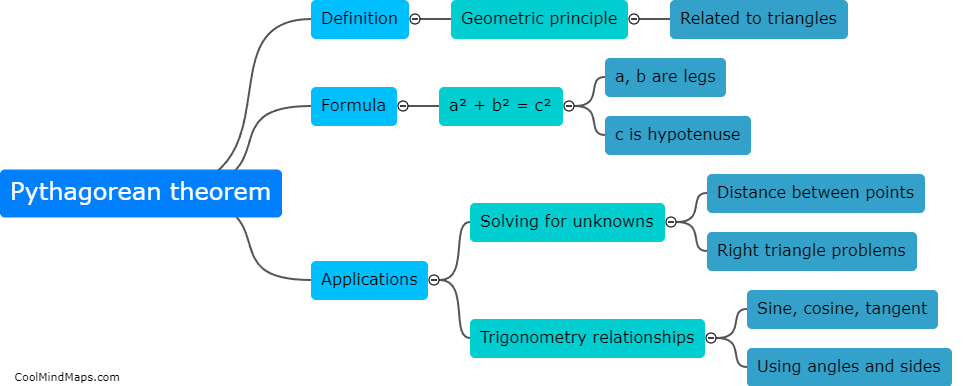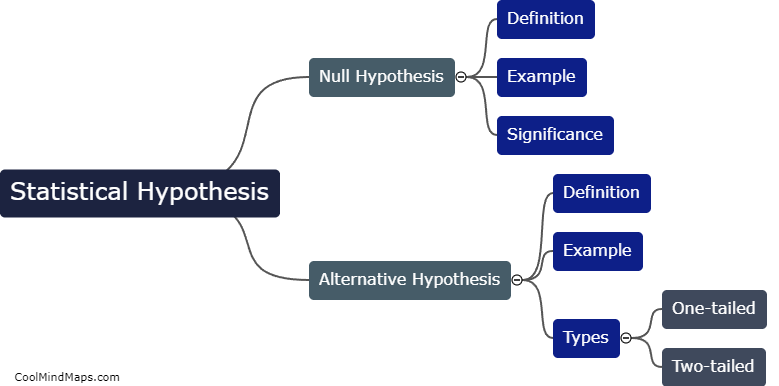What is the Pythagorean theorem?
The Pythagorean theorem is a fundamental concept in geometry that states that in a right triangle, the square of the length of the hypotenuse (the side opposite the right angle) is equal to the sum of the squares of the other two sides. The theorem is named after the ancient Greek mathematician Pythagoras, who is credited with discovering and proving it. The Pythagorean theorem has numerous practical applications, from calculating distances in real-world objects to solving complex mathematical problems.

This mind map was published on 19 April 2023 and has been viewed 109 times.











